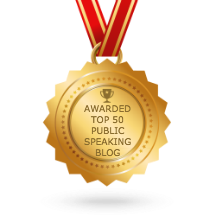Email has become the preferred means of communication for business, yet many people forget that it still is mail. And all emails are not created equal. Some are conversations between colleagues and can be very informal, where texting language can be used. But when an email is going outside of the company, especially for an initial contact, it should be treated as a letter, where grammar, spelling, and clarity count. Here are a few tips to help you write better and ensure that your messages is not only read, but understood:
1. The Drafts folder is there…use it.
The biggest piece of advice I like to give clients regarding writing effective emails is: Don’t hit send; save important emails to drafts. Writing is a process (the topic of my next Effective Business Writing Tip) and is done through drafting and editing; something that’s easy to forget in these times of instant communication.
2. Forget telling the whole story.
One of the most common mistakes people make in composing email is in the long paragraph that the reader has to get through before the message gets to the point. This is what I call the “running start,” where you need to warm-up your ideas before they solidify. You are, in effect, thinking it through in the body of the email, which is the job of pre-writing (can take the form of various forms of brainstorming techniques, including free-writing, which is part of Writing as a Process). Don’t forget to edit and eliminate the build-up story.
3. Eliminate unnecessary words, too.
To accomplish this you might follow the advice of Mark Twain: “Substitute the word ‘damn’ every time you are inclined to write ‘very;’ your editor [boss] will delete it and the writing will be just as it should be.” The best way to accomplish this is to proceed to tip #4.
4. Read it out loud
Read each and every business email out loud to yourself, stopping to ask, “Is that what I really mean? Does it sound natural? Is it redundant?” By hearing the message read, you can catch more typos than your eye can catch and you’ll know where you can eliminate extra and superfluous words.
5. Get to the point
Academic writing, the way most of us learned to write, moves from the general the specific (remember the ‘funnel’ or inverted triangle for essay writing?), but business writing is the opposite; picture an upright triangle. Be as specific as you can with your subject line and get right to your purpose in the body. Think about your reader here, and give her or him some credit (some readers may need fewer details than others). Consider: Is there an action you want, information you want to give, is a reply needed, or a conversation you want to open? Start with your specific purpose and build outward, adding only needed details.
Stay tuned. I have more handy writing tips in this series, where I’ll give you tools and techniques for pre-writing, achieving clarity, remembering grammatical structures, choosing the active voice, and many more. For more information go to: http://www.self-expression.com/coaching-business-writing.shtml




